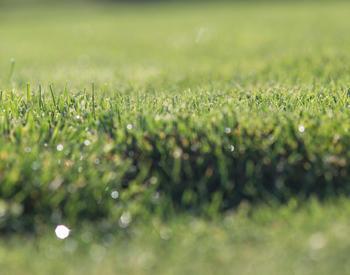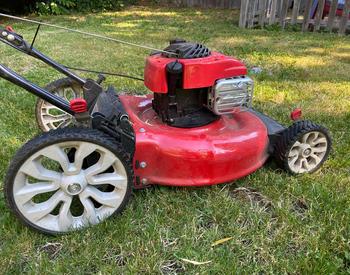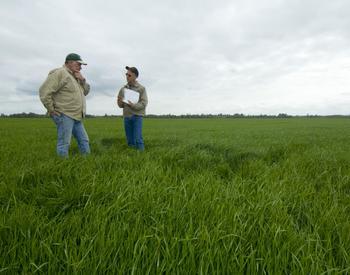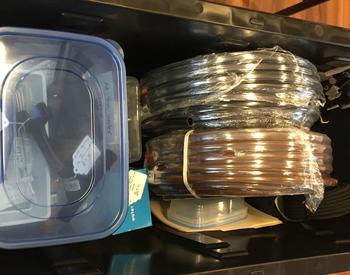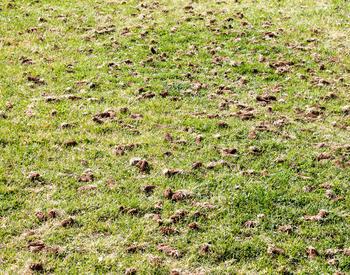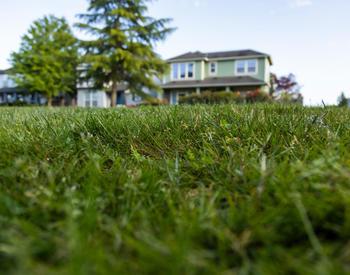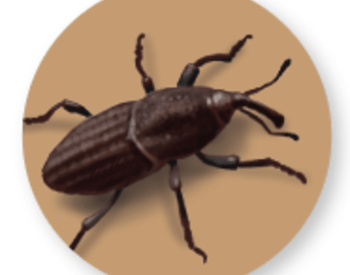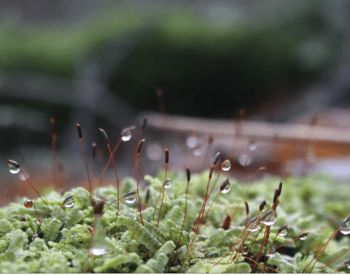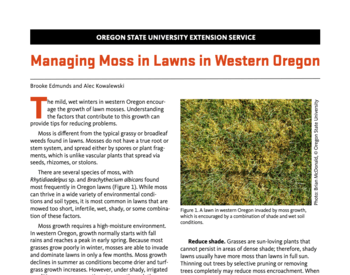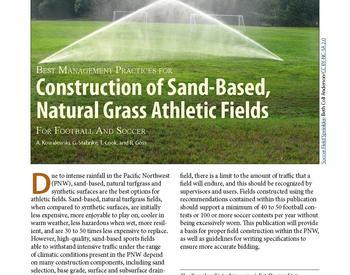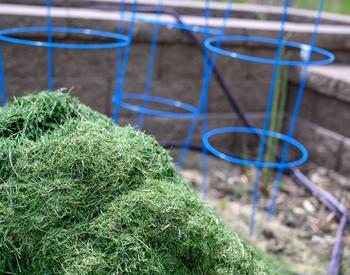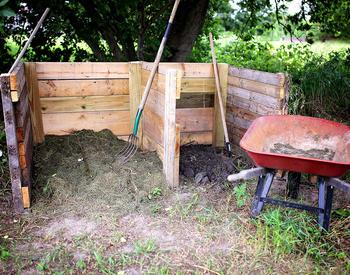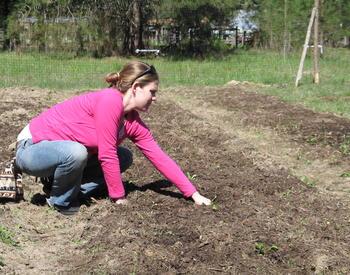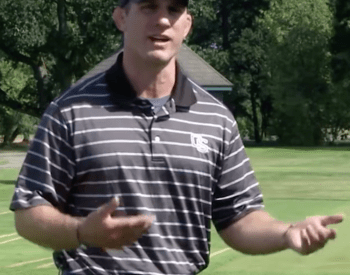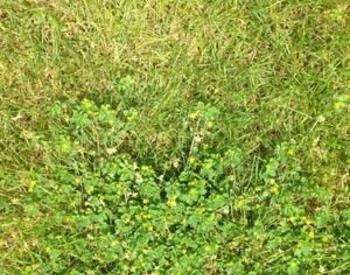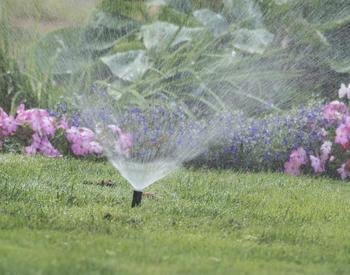Introduction
Turfgrasses have been important to the quality of life of humans for nearly 2,000 years. Today, turfgrass is the single largest irrigated crop in the United States and covers three times the land area of any other cultivated crop. An estimated 40.5 million acres of grasses are planted in residential, commercial and institutional lawns, golf courses and athletic fields. The turfgrass maintenance industry contributes almost $75 billion annually and at least 900,000 jobs to the economy of the United States. The nationwide economic value includes salaries, equipment and supplies for the maintenance of turfgrasses on golf courses (44%), lawn care services (28%), lawn care retail stores (13%), lawn equipment (12%) and sod production (3%). A survey in the state of New York showed that turfgrasses covered 10% of the state’s landmass. Most of that land area was private residential lawns (82%), and much less was on golf courses (3%), parks (2%), and other areas. This distribution of land uses is thought to be typical of that in most other states.
Turfgrasses serve society by adding beauty and aesthetic value to our environment. On sports fields, they improve the quality of our recreational needs, and they help reduce injuries in vigorous sports. Turfgrasses also control water, sediment and wind erosion and serve as a utilitarian cover around businesses, public institutions, parks, cemeteries and other facilities. They add value to property and reduce air and noise pollution, heat buildup, visual pollution and glare. They are often planted along roadways in large cities, and they are also maintained between airport runways to reduce dust and extend airplane engine life and increase safety. The management of turfgrass is a large segment of the horticultural industry in all states.
Categories of use
- Lawn: Turfgrasses used primarily for decorative functions. They have a uniform, green appearance that enhances the beauty of the landscape. They provide areas for recreation and relaxation. They are best when they have a dense canopy, a uniform texture (width of the leaf blades), and a pleasing color. Lawns have an intermediate intensity of management.
- Sports: These grasses provide surfaces for recreational or organized sports. Intense traffic can compact the soil and cause surface abrasion, requiring many special considerations. Sports turfs require a high level of management.
- Utility: Utility turfs, with their fibrous roots and foliar ground cover, stabilize the soil, providing a cooling effect during warm weather, absorbing toxic emissions along roadsides or serving as small runways or road surfaces.
Quality characteristics
- Density: This term refers to the number of aerial shoots per unit area. This trait differs among varieties within each turfgrass species but is also affected by management conditions such as mowing height, soil fertility and water application.
- Texture: This term refers to the width of the leaf blade. Coarse and fine textures are not typically planted together; e.g., fine-leaf fescue doesn’t usually blend well with tall fescue. While the texture of all grass species becomes finer as the planting density is increased, it may become more coarse after the stand becomes thinned by environmental stress, heavy traffic or disease.
- Uniformity: This term describes two traits: the composition of the plant stand and the evenness of the turf surface. It is influenced by factors such as leaf texture, shoot density, species composition, color, mowing height, and other features that affect the visual quality and the value associated with the playability of sports turfs.
- Color: Several turf species are now available in varieties that are naturally a darker green. However, in all grasses, a chlorotic appearance may indicate a nutrient deficiency, a disease, or unfavorable management. An unusually dark appearance may be evidence of excessive fertilization, wilting, or early stages of some diseases. Patches of contrasting colors may start to segregate in older turfs due to clonal growth habits of grasses such as Kentucky bluegrass, rough bluegrass, annual bluegrass or bentgrass. The most aggressive clones establish zones in which the weaker clones become excluded. Mowing quality can also influence color; ragged leaf ends become gray or brown soon after mowing, especially during summer.
Growth habits
- Bunchgrasses spread by tillering. They can produce uniform turfs in dense plantings but can become clumpy if planted too lightly or thinned by disease or stress. They include perennial ryegrass and tall fescue.
- Rhizomatous grasses spread by below-ground shoots (rhizomes) and tend to form uniform turfs with upright shoots. They include Kentucky bluegrass and creeping red fescue.
- Stoloniferous grasses spread by above-ground shoots (stolons) and tend to form uniform turfs with lots of decumbent shoots when mowed at heights greater than 3⁄4 inch (as on lawns). They include bentgrass and rough bluegrass.
- Combinations of these growth habits also occur. Annual bluegrass is a bunchgrass that also produces stolons. Bermudagrass and Zoysiagrass produce both rhizomes and stolons.
Structures of grass plants
A mature, unmowed grass plant is composed of leaves, roots, stems and a seed head. Some grass species do not have stolons or rhizomes. Mowed grasses typically lack flower stems and seed heads.
Stems
Three types of stems occur in grasses: the crown, horizontal stems (rhizomes and stolons) and the flower stem. Although the crown is a stem, it does not look like the other types of stems found in grasses. It is very small (just a fraction of an inch long), white and enclosed by leaf sheaths. The crown is located in a protected position between the roots and shoots near the soil surface.
Horizontal stems begin to form in the crown and develop into rhizomes or stolons. Rhizomes grow below ground for a short distance, then rise to the soil surface to form new shoots. Rhizomes produce growing points, called nodes, which give rise to roots and shoots forming new ‘daughter’ plants. Rhizomes are usually white and are a desirable trait in turfgrasses because they allow plants to send new shoots into areas that are thin or damaged by traffic, drought or disease. Kentucky bluegrass is the premier grass used for the installation of new sod in the northern U.S. because its rhizomes allow turf to ‘knit’ and hold together as the sod is cut, rolled and lifted. It is also desirable in athletic fields because the rhizomes provide superior footing for athletes.
Stolons grow above-ground and form nodes that give rise to new plants. Stolons are green and can creep over other established grasses and bare spots in lawns, often forming circular patches. New shoots are produced from nodes or from tips of the stolon as it turns upward. Stoloniferous, cool-season turfgrasses (creeping bentgrass and rough bluegrass) can become very troublesome weeds if mixed with other lawn grasses since they form light-colored, circular patches as they creep over the more desirable turfgrasses.
The growing point (meristematic tissue) that gives rise to leaves is located in the crown at the base of the stem. The fact that grass leaves begin to grow from the base of the plant is the main reason why grass blades can be mowed without sustaining serious injury.
Tillers produce new leaves, stems and root systems. They therefore function independently of the mother plant. Tillers increase the shoot density of lawns by replacing shoots that die in winter and summer. Individual tillers live for about a year and formation of new tillers is stimulated by cool temperatures, short day lengths, moderately low mowing heights and high mowing frequencies. Peak tiller formation occurs in early spring and fall. Turfgrass stands are long-lived because dying shoots and roots are constantly being replaced by new tillers. This process is so gradual that the transition is unnoticeable.
Flower stems are also formed in the crown, usually in late spring or early summer in most cool-season grasses. Typically, they are not seen in turf since they are mowed off before they reach maturity. On unmowed grass, flower stems grow vertically and give rise to seed heads.
Leaves
A grass leaf is divided into three parts: the blade, sheath and collar region. The blade is long and narrow and grows more or less horizontally away from the main shoot. The sheath is the portion of the leaf that envelopes the shoot or stem. The collar region is located where the blade and sheath meet and may or may not have distinct structures called the collar, ligule and auricle. The smooth area on the backside of the leaf where the blade and sheath meet is the collar. It is usually a lighter color than the blade and may continue across the width of the leaf or be divided in half by a large midvein. A ligule is a thin piece of tissue that extends just above the top of the leaf sheath and can vary in size and shape. An auricle is another small piece of leaf tissue that grows from the collar and can also vary in size and shape.
Turfgrass leaves live for a period of time and then die and are replaced by new ones. Under favorable environmental conditions, the number of leaves per plant remains the same as new leaves replace those that die. The rate of leaf growth is dependent on many factors including temperature, moisture, nutrition and day length. Optimum temperatures for leaf growth among the cool-season turfgrasses range from 60°F to 75°F. Leaf growth increases with increasing day length as long as temperatures are within the optimum range and moisture is adequate. Application of nitrogen fertilizer can greatly increase leaf growth if moisture and temperature are not limiting.
Roots
Turfgrass roots are fibrous, branching and slender. There are two types of root systems in grasses—the primary and the secondary. The primary roots develop at the time seed is germinating. Secondary roots develop at the base of each new tiller, including the tillers arising from nodes on stolons and rhizomes.
Turfgrass root growth is affected mainly by soil temperature, moisture and oxygen. The optimum temperatures for root growth of cool-season grasses are lower than those for shoot growth. Although the optimum temperature range for rooting differs somewhat among turfgrass species, most cool-season turfgrasses produce the best root growth at soil temperatures between 50°F and 65°F. Roots of cool-season grasses can grow at soil temperatures well below 50°F, but growth slows dramatically as temperatures approach freezing. When temperatures reach 90°F in the surface inch of soil, Kentucky bluegrass root growth is greatly reduced or completely stopped. Root growth is greatest for cool-season grasses during spring and fall and much reduced during the summer and winter months.
The amount of water the roots absorb will depend primarily on the number of roots, the depth of roots, and the amount of water in the soil. Since the rooting depth of cool-season grasses is usually between 2 and 6 inches, most water absorption initially occurs near the soil surface. As the surface water is depleted, roots begin using up water deeper in the soil. A well-developed and actively growing root system can take advantage of this deeper soil moisture as surface moisture is depleted during dry periods. Contrary to popular belief, roots do not ‘seek out’ water, instead, they grow more vigorously and proliferate where water is available.
Turfgrass roots need an adequate supply of oxygen for normal growth and development. Severely compacted soils have limited supplies of oxygen and will not support good root growth even when favorable temperatures and moisture levels are present. Too much water will also deplete the soil of oxygen and cause deterioration of turfgrass roots. Soils with loose, crumbly structure and good drainage are ideal for root growth and development.
Other factors that have an effect on root growth and development are soil pH, fertilization practices, salt concentrations, herbicides, diseases and insects.
Selected turfgrass species and foliar characteristics
Bluegrasses
All bluegrasses have folded vernation, membranous ligules and no auricle. They also produce very shallow roots.
- Kentucky bluegrass (Poa pratensis) produces a highly desirable dense, attractive turf but it grows poorly in infertile and acid soils and readily becomes dormant during droughty periods. Blades are of variable width, V-shaped or flat, smooth on both surfaces and boat-shaped at the tip. Parallel light lines border each side of the central vein. It has a rhizomatous (spreading) growth habit.
- Rough bluegrass (P. trivialis) is a fine-textured, light green, stoloniferous grass that is a weed in high-quality lawns. Blades are 1- to 4-mm wide, smooth on both surfaces, glossy on lower surface, and boat- shaped at the tip.
- Annual bluegrass (P. annua) is generally not planted as a turfgrass but is present as a ‘weed seed’ in inexpensive seed mixtures. In older turfs, it develops dominant and spreading clones that turn light green from fall to spring in moist, fertile soil. It is a winter annual bunch-type grass with leaf blades 2- to 3- mm wide, flat or V-shaped, smooth on both surfaces, and boat-shaped at the tip.
Ryegrasses
- Perennial ryegrass (Lolium perenne) is planted extensively in seed mixtures that also contain Kentucky bluegrass and fine-leaf fescue. Perennial ryegrass is a cool-season, bunch-type grass that tolerates a wide range of soil conditions but requires good soil fertility. It has a rapid germination rate and vigorous seedling growth, but it may exhibit poor quality during periods of heat and drought stress. It has leaf blades 2–5 mm wide, ridged on upper surface, glossy and keeled on lower surface. It has folded vernation, membranous ligule, and small, soft, clawlike auricle. It produces moderately deep roots.
- Annual ryegrass (Italian ryegrass; L. multiflorum) is included as a filler in inexpensive seed mixtures. It provides a temporary ground cover but is a weed in high-quality lawns.
Fescues
- Creeping red fescue (Festuca rubra ssp. rubra) consists of two distinct types: a strong, creeping type and a type with short rhizomes. Both types are usually planted in mixtures with Kentucky bluegrass and perennial ryegrass. Fine-leaf fescues grow well in droughty or shaded sites and on less fertile and more acidic soils. They do not tolerate low mowing heights or traffic in hot, dry weather. Leaf blades are 1.5- to 3-mm wide, deeply ridged on upper surface, and have a smooth lower surface and margins. They have folded vernation, membranous ligule and no auricle, and they produce moderately deep roots. Chewings fescue (F. rubra ssp. fallax), sheep fescue (F. ovina ssp. ovina) and hard fescue (F. ovina ssp. duriuscula) are noncreeping fine-leaf bunchgrasses that are used as utility turf.
- Tall fescue (Festuca arundinacea) is a desirable bunch-type lawngrass that tolerates a wide range of soil conditions and moderate shade. Lawngrass types have medium-textured leaf blades that are tolerant of abrasive traffic. Leaf blades are 5- to 10-mm wide, flat and stiff, ridged on the upper surface, smooth on the lower surface, and have scaly (serrated) margins. They have rolled vernation, membranous ligule, a short, blunt auricle and deep roots.
Other grasses
- Creeping bentgrass (Agrostis palustris) is a fine-textured stoloniferous grass that requires intensive management. It is poorly adapted for use in lawns. Leaf blades are 2- to 3-mm wide, flat and ridged on the upper surface and smooth on the lower surface, with scaly leaf margins. They have rolled vernation, oblique raised collar, membranous ligule, no auricle, and shallow roots.
- Bermudagrass (Cynodon dactylon) is a warm-season grass with both stolons and rhizomes and deep roots. Leaf blades are 1.5- to 4-mm wide, flat and smooth or hairy on both surfaces. It has folded vernation, hairy margins on the collar, ligule consisting of a fringe of hairs and no auricle.
- Zoysiagrass (Zoysia japonica) is also called Japanese lawngrass. It is a warm-season grass with both stolons and rhizomes, and deep roots. Leaf blades are 2- to 4-mm wide, flat and stiff, with long hairs on a smooth upper surface and sometimes also on the lower surface. It has rolled vernation, hairy collar, ligule consisting of a fringe of hairs and no auricle. It turns straw-color or brown when temperatures fall below 50°F in the fall, and it is very slow to green up in the spring. In our region, it is unsightly for about six months of the year.
Comparisons
| Turfgrass | Vernation | Auricle | Ligule & height | Collar | Leaf blade & width | Growth type |
|---|---|---|---|---|---|---|
| Kentucky bluegrass | Folded | Absent | Membranous, short, blunt, 0.2–1 mm | Broad, divided | V-shaped to flat, boat-shaped tip, 2–4 mm | Rhizomes |
| Annual bluegrass | Folded | Absent | Membranous, thin, white, acute tip, 1–3 mm | Conspicuous, divided | V-shaped, light-green, boat-shaped tip, 2–3 mm | Bunch & stolons |
| Perennial ryegrass | Folded | Small, soft, claw-like | Membranous, blunt, 0.5–1.5 mm | Distinct, divided, smooth | Flat dull upper surface, glossy under surface, 2–5 mm | Bunch |
| Fine-leaf fescue | Folded | Absent | Membranous, blunt, 0.2–0.5 mm | Narrow, indistinct, smooth | Narrow, folded, 0.5–1.5 mm | Rhizomes |
| Tall fescue | Rolled | Short, blunt, pubescent | Membranous, short 0.4–1.2 mm | Broad, divided, short hairs on margins | Flat, stiff, pointed tip, no dominant midvein, dull keeled under surface, 5–10 mm | Bunch |
| Creeping bentgrass | Rolled | Absent | Membranous, acute to oblong, 1–2 mm | Narrow to broad, continuous | Narrow, flat, acute tip, 2–3 mm | Stolons |
| Bermudagrass | Folded | Absent | Fringe of white hairs, 1–3 mm | Continuous, smooth, ciliate | Flat, stiff, acute tip, 1.5–3 mm | Stolons & rhizomes |
| Zoysiagrass | Rolled | Absent | Fringe of hairs, 0.2 mm | Continuous, broad, ciliate at margins | Flat, stiff, 2–4 mm | Stolons & rhizomes |
| Trait | Kentucky Bluegrass | Perennial ryegrass | Fine fescue | Tall fescue | Bentgrass | Bermudagrass | Zoysiagrass |
|---|---|---|---|---|---|---|---|
| Establishment vigor | Slow | Fast | Medium | Medium | Medium | Fast | Slow |
| Leaf texture | Medium | Coarse | Fine | Coarse | Fine | Medium | Medium |
| Mowing quality | Good | Poor | Medium | Medium | Medium | Medium | Poor |
| Shoot density | Medium | Low | Medium | Low | High | High | High |
| Wear resistance | Medium | Medium | Medium | High | Low | High | High |
| Recuperative capacity | High | Medium | Medium | Medium | High | High | Low |
| Thatching tendency | Medium | Low | Medium | Low | High | High | Medium |
| Fertility requirement | Medium | Medium | Low | Medium | High | High | Medium |
| Disease potential | Medium | Medium | Medium | Low | High | Medium | Medium |
| Mowing tolerance | Medium | Medium | High | High | Low | Low | Low |
| Cold tolerance | High | Low | Medium | Medium | High | High | High |
| Heat tolerance | Medium | Low | Medium | High | High | High | High |
| Drought tolerance | Medium | Medium | High | High | Low | High | High |
| Shade tolerance | Low | Low | High | Medium | Medium | Low | Medium |
| Soil acidity tolerance | Low | Low | High | High | Medium | Medium | Medium |
| Salinity tolerance | Low | Medium | Medium | Medium | High | High | Medium |
Photosynthetic pathways
- Cool-season (C3) grasses: The bluegrasses, ryegrasses, bentgrasses and fescues are members of the Festucoideae subfamily of plants. They fix carbon via the Calvin (C3) photosynthetic cycle. They grow most actively at temperatures between 60°F and 75°F and they require cool nights for optimum growth. The adaptation of these grasses is limited by seasonal heat and drought stress. They are well adapted to temperate and subarctic climates. Photoperiodic conditions influence vegetative growth and development. At intermediate latitudes, short photoperiods occur in spring and fall, and long photoperiods occur during summer. Cool-season grasses growing under short day lengths typically exhibit increased density and tillering, shorter leaves, smaller shoots (including stolons and rhizomes), and a more prostrate growth habit compared to plants growing under long day lengths.
- Warm-season (C4) grasses: Bermudagrass and Zoysiagrass are members of the Eragrostoideae subfamily of plants. Carbon is fixed via the Hatch & Slack (C4) photosynthetic pathway. They produce optimal growth at temperatures between 80°F and 95°F, and they require warm nights. Their adaptation is limited by intensity and duration of cold temperatures. These grasses are well adapted to tropical and subtropical climates.
| Species | Seed germination (soil temperature at 1-inch depth)Soil temperatures above 65°F at 1-inch depth occur when daytime air temperatures are consistently 80°F or higher. | Leaf growth (temperature of the air) | Root growth (temperature of the air) | Root death (soil temperature at 1-inch depth) Soil temperatures above 65°F at 1-inch depth occur when daytime air temperatures are consistently 80°F or higher. |
|---|---|---|---|---|
| Kentucky bluegrass | 59–86 | 60–75 | 50–65 | >80 |
| Creeping red fescue | 59–77 | 60–75 | 50–65 | >80 |
| Tall fescue | 68–86 | 60–75 | 50–65 | >80 |
| Perennial ryegrass | 68–86 | 60–75 | 50–65 | >80 |
| Bermudagrass | 75–85 | >80 | 75–90 | <65 |
| Zoysiagrass1 | N/A | >80 | 75-90 | <65 |
Root growth and death
Turfgrass species vary in the extent to which their roots are replaced each year. Individual roots have distinct life spans and seasonal cycles of development.
Kentucky bluegrass retains a major portion of its roots for more than one year and is considered to be a perennial rooting grass. Grasses that replace most of their root system each year are considered to be annual rooting types, including perennial ryegrass, fine-leaf fescues, tall fescue, annual bluegrass and bentgrasses.
For cool-season grasses, the most active period of root initiation and growth occurs during the late spring (April–June) when soil temperatures at 1-inch depth are between 50°F and 65°F. Active root growth also occurs to a lesser extent during cool weather in the fall (October and November). The most active times for root death and a lack of root replacement occurs during the summer (July–September), thereby coinciding with the times when the most severe environmental stresses occur. Loss of roots of cool-season grasses is particularly acute during midsummer when the soil temperature exceeds 80°F at a 4-inch depth or exceeds 90°F at a 1-inch depth. In contrast, warm-season grasses have the greatest root activity during summer (July–September) and have root death and a lack of root replacement during the winter and spring (November–May).
Roots typically live as long as the shoot they support remains alive. Individual shoots (and roots) are continuously replaced—the same shoots don’t live over a period of multiple years. However, stresses may cause the death of roots while their associated shoot survives. This is common in cool-season grasses during periods of midsummer stress.
Compared to other grasses, Kentucky bluegrass develops a shallow root system and therefore has a lower tolerance for heat and drought. However, Kentucky bluegrass has the ability to go dormant and can recover if it is watered intermittently to keep the plants alive and minimally growing during the drought. Bluegrass produces roots on individual shoots, including the plants that arise from nodes on rhizomes. This increases the density of the turf. However, high nitrogen fertilization and close, frequent mowing greatly decreases the growth of Kentucky bluegrass roots.
Managing mature turfgrasses
Water
The depth, timing, quantity and quality of irrigation water are each critically important. Cool-season turfgrasses such as Kentucky bluegrass and perennial ryegrass require irrigation as necessary to prevent wilt and to sustain foliar density. However, waterlogging will cause rapid death of roots, and particularly of root hairs. It is therefore very important to apply the correct amount of water to avoid exceeding the rate of water infiltration, and to ensure that the surface and subsurface drainage is adequate to allow the water to infiltrate. There are models to determine how much water will be required to maintain a healthy lawn. They are based upon measurements of evaporation and transpiration rates. However, those rates change over the season as well as daily, depending on such factors as light intensity, wind speed, relative humidity of the air, temperature, slope aspect, and others. Therefore, it is common to adjust the watering program based on local knowledge and experience. The very worst scenarios include the application of too little water to keep the grass growing, or to leave sprinkler systems on the same setting throughout the season and even during rainy periods. During rainy periods the sprinklers should be turned off or set to shorter sprinkling intervals.
In general, it is best to apply water as deeply and as infrequently as possible to meet the conditions of the season. During the summer, on deep soils with a fine or medium texture, it may be possible to apply a half-inch of water every third day or an inch of water once each week. But during that same weather period, it may be necessary to apply a quarter of an inch every day or every other day on soils that are shallow or have a heavy texture.
The timing of water application is also important from a plant health perspective. Applications during the evening tend to extend the period of leaf wetness during the night, which promotes infections by leaf pathogens and subsequent deterioration of the lawn. Water applied during the early morning usually allows the leaf to dry much more quickly, which can greatly reduce the occurrence of leaf diseases. Water applied during the middle of a hot, windy day often leads to an application rate that is less-than-anticipated due to the high rate of evaporation at that time.
Tall fescues are very tolerant of dry soils where soil profiles are deep, but usually require watering in our semiarid region and especially when deep rooting is not possible due to a heavy soil texture or an obstruction such as shallow bedrock. Bentgrasses are very shallow rooted and require frequent irrigation.
Fertilizer
The rate and timing of fertilizer application are each critically important for the maintenance of a healthy and persistent lawn. Traditionally, response to nitrogen has been judged by turfgrass color or growth rate. But those measures are of minimal importance with respect to turfgrass quality. Root growth, carbohydrate reserves, shoot density, and stress tolerance are each more important indicators of turfgrass response to nitrogen and plant health.
Fertilizers are marketed as "plant food." Although we all recognize that nutrients from fertilizers are required by plants for proper growth and development, it is generally not understood that fertilizers are not really "plant food." Plants make their own food through photosynthesis, a chemical reaction in leaves that involves water, carbon dioxide, and light energy. The end products are carbohydrates, which are used by the plant for energy and growth. Carbohydrates are therefore the true plant food. Carbohydrates can be stored in stem and crown tissues when they are made faster than they are used. Storage is greatest in the fall and is beneficial since the plant needs carbohydrates for recovery from injury when turf is damaged by pests, drought, heat and mower injury the following year. Depletion of carbohydrates is fastest in spring, especially under low mowing heights and high nitrogen fertility. If depleted too quickly, the turf may go into the summer months in a weakened state. This is one reason why turfgrass professionals do not apply an excessive amount of nitrogen and mow below the optimum cutting height during the spring.
Moderate nitrogen nutrition levels allow a balanced supply of carbohydrates to support both shoot and root growth. Excessive nitrogen levels force shoot growth, with the shoots having priority for available carbohydrates, thereby resulting in the death of the root system. High potassium levels are also important throughout the year because this fosters deep rooting, which in turn contributes to drought resistance. Iron also provides some of the same benefits.
Fertilizer application rates are greatly affected by the practice of either retaining or removing turfgrass clippings. Fertilizer requirements are 30% to 50% higher when clippings are collected and removed, as compared to being retained on the lawn.
- Kentucky bluegrass and perennial ryegrass require 3–8 p;pounds of nitrogen per a thousand square feet per year if clippings are removed. Rates can be reduced by 30% to 50% if clippings are retained.
- Creeping red fescue requires only 2 lb N/1000 ft2 per year, or less if clippings are retained. It is intolerant of high fertility.
- If clippings are retained, tall fescue requires minimal fertilizer, and only in midspring.
- Bentgrass requires 4–8 lb N/1000 ft2 per year, and clippings are not retained.
Mowing
The mower type, blade sharpness, height, frequency, timing and clipping removal or retention are critical aspects of the mowing program. Each of these factors may differ for each turfgrass species, and even for some varieties within species. For example, dwarf varieties of Kentucky bluegrass are mowed less frequently than varieties with a standard rate of leaf growth.
Most home lawns are mowed with a mower having a rotary blade. These mowers are very versatile and there are a number of different types of rotary blades from which to choose. All mowers cause leaf blades to lean in the direction in which they are mowed. Changing directions or patterns of mowing can minimize the graininess.
Rotary blades spin horizontally and cut when the knife blade impacts the leaf blade. This causes a certain amount of mutilation and injury to the leaf blade at the point of impact. The sharpness of the mower blade is therefore very important. A sharp mower blade cuts the leaf blade cleanly, leaving a much better appearance to recently mowed grasses. A dull mower blade rips and tears the leaf blade, leaving uneven cuts and, on some species, the remnants of tough vascular bundles extending from the ripped ends. The vascular bundles on mutilated leaf tips quickly turn gray or brown and leave an unsightly appearance to recently mowed grasses. Ripped leaf tips also increase the loss of moisture from the leaf, and provide a favorable site for penetration of pathogens into the leaf. The sharpness of the mower blade is particularly important for perennial ryegrass, tall fescue and Zoysiagrass, each of which have tough vascular bundles.
The mowing height dictates the amount of leaf area available for photosynthetic activity to produce carbohydrates that are important for root growth. The leaf area is increased as the mowing height is increased.
- Kentucky bluegrass is mowed at heights of 1.5 to 2.5 inches.
- Perennial ryegrass is mowed at heights of 1.5 to 2 inches.
- Fine-leaf fescue and tall fescue are mowed at heights above 1.5 inches.
- Bentgrass is best adapted for mowing at heights of 0.2 to 0.5 inch.
The mowing frequency should be varied so that only a third of the leaf length is removed with each mowing. This will change over the growing season and with the dominant grass species. A weekly mowing schedule is appropriate for only a very limited portion of the season. Mowing should be continued until the grass quits growing during the winter. Don’t allow leaf blades to remain long during the winter, when they can become matted by leaves, snow, or traffic, leading to a much greater growth of fungal pathogens on the matted leaves.
Lawns should be mowed when the grass blades are dry. The dry grass blades cut more easily and cleanly and do not clog up the mower. Mowing dry grass minimizes the bunching of clippings, minimizes the spread of disease-causing organisms, and leaves a finer appearance.
Management of turfgrass clippings has an economic as well as an aesthetic consideration. As stated previously, lawns in which the clippings are returned require as little as half the amount of fertilizer compared to lawns where clippings are removed. Clippings contain about 3% to 5% nitrogen, 0.5% phosphorus, and 2% to 3% potassium. A single-family home can produce up to 400 pounds of grass clippings per 1,000 square feet of lawn. This equates to about 8 tons/acre each year. The 400 pounds of clippings would include 20 pounds of nitrogen, 2 pounds of phosphorus, and 12 pounds of potassium. Returning clippings to the lawn gives the grass a gentle, slow-release feeding every time you mow, and can reduce the annual fertilizer requirement as much as 50%. Removing the clippings often costs money to transport them to a dump or composting facility, and adds a considerable expense to replenish the nutrients.
Decomposed clippings bring such benefits as improved soil properties and plant growth. The rate of water infiltration into soil is greater on lawns where clippings are returned. True mulching mowers, with sealed decks and sharp blades, pulverize the clippings into a fine powder that's virtually invisible. As the particle size is reduced, the level of biological activity becomes greater, leading to a more rapid rate of tissue decomposition and nutrient recycling. Removing clippings depletes the residual biomass that becomes the carbon and energy source for many beneficial organisms.
Thatch
Thatch is a loose, intermingled organic layer of dead and living shoots, stems and roots that develops between the zone of green vegetation and the soil surface. It is mostly undecomposed at the top and in a stage of more advanced decomposition where it meets the soil.
Thatch is highly aerated and has poor nutrient- and water-holding properties. Thick thatch becomes a growth medium for turfgrass plants. Turfgrasses that have most of their roots confined to the thatch layer are more prone to injury from environmental stresses such as heat, drought or cold. Diseases and insect injury are often more severe where the thatch layer is thick. On sloping terrain, water runs through the thatch rather than infiltrating into the soil. The runoff results in water collecting in the lowest areas or being lost onto the sidewalk or street.
Thatch builds up quickly when turf produces organic debris faster than it can be decomposed. This is particularly problematic when high rates of nitrogen fertilizer are applied. Nitrogen promotes thatch development because it increases production of root and stem tissues. The ability of some nitrogen sources to acidify soils also may reduce the rate of thatch breakdown.
Parts of the grass plants that are the most resistant to decay (stem nodes, crowns, fibers of vascular tissues and roots) make up the bulk of thatch. Although there are some leaf clippings in the thatch layer, they usually don't contribute to thatch build up because soil microorganisms easily break them down. About 25% of thatch is made up of a compound called lignin. Lignin is resistant to decay by microorganisms and one of the main reasons why thatch builds up faster than it breaks down. The remainder of thatch is primarily cellulose and hemicellulose compounds that decompose much more easily and quickly. Leaf clippings of most grasses typically contain high amounts of cellulose and hemicellulose and very little lignin. The return of clippings to the lawn also increases the biological activity at the soil surface, thereby helping to minimize accumulation of thatch.
Acid soils (pH 5.5 or lower) generally inhibit these microorganisms, resulting in the rapid thatch build-up. Soils that contain large amounts of clay or sand, are compacted or have poor structure also contain low microbial activity and are subject to thatch build-up.
Frequent applications of certain pesticides sometimes cause thatch build-up. Some insecticides influence thatch development by impeding the activity of earthworms. As earthworms burrow, they mix soil and castings with thatch, thereby stimulating microbial activity and breakdown of the thatch. Occasional applications of fungicides do not contribute to the accumulation of thatch. However, frequent applications of some fungicides, multiple times each year, can promote thatchiness by increasing the rate of root and rhizome production. They don’t significantly suppress activities of soil microorganisms that decompose organic matter.
A thatch preventative program begins with the planting of appropriate species and varieties, proper use of fertilizer, and core aeration. Some turfgrass species produce a lot of lignin- containing stem tissue in the form of rhizomes or stolons. These species form more thatch than other turfgrass species. The thatch forming cool-season grasses include Kentucky bluegrass, creeping red fescue, and creeping bentgrass. Perennial ryegrass and tall fescue are bunch-type grasses that do not produce a significant amount of thatch. Mixing some perennial ryegrass with Kentucky bluegrass or using perennial ryegrass or tall fescue alone will cut down on thatch removal operations. Zoysiagrass has a high concentration of silica, which makes it very prone to accumulation of thatch.
If growth of any of the thatch- producing grasses are over-stimulated by excessive rates of fertilizer application, a thick layer of thatch can develop rather quickly and will require periodic vertical mowing and core cultivation to improve the performance of the turfgrass.
Core aeration is an important preventative maintenance practice for thatch control in turfgrasses that have thatch-prone grasses or thatch-inducing management practices. Regular core aeration alleviates compaction and improves air movement into soils, thereby increasing microbial activity and breakdown of thatch. This practice also physically removes thatch.
When thatch layers reach an inch or more, preventative practices won't provide adequate control. In such cases, you must physically remove thatch. Use a vertical mower with blades that are perpendicular to the turf surface. As the unit moves over the turf, the rotating blades slice into the thatch, bringing up organic debris. You can adjust the blades to different depths, allowing you to regulate how much thatch you remove. But get some experience with vertical mowers before you begin a thatch- removal operation. If you are not careful you will remove more thatch than desired and the stand will be severely thinned. The grass will look like it was rototilled. It may be necessary to set the blades high at first and only remove a small amount of thatch in the first pass. This is a safer approach because it allows you to determine the amount of thatch remaining and the degree of turf thinning before making a second pass in a different direction.
Most of the root system is growing in the thatch layer when thatch has accumulated to depths of two inches or more. It is impossible to reduce it to a desirable level without severely thinning the turf. As you remove the thatch, you also remove many live turfgrass plants. Thus, you will need to overseed these sites.
Don't remove thatch when the turf is weak or under heat stress or drought stress. Doing so increases the chance of injury and decreases recovery potential. Remove thatch from cool-season turfgrass stands during late summer or early fall to reduce the chances of serious turf injury. Also, encroachment of weeds is less likely to occur when thatch is removed during the late summer or early fall, as compared with removal during the spring.
Shade
All grasses except creeping red fescue require substantial periods of sunlight. Red fescue is tolerant of moderately shaded sites. Bermuda grass is intolerant of any type of shade. However, for most grasses, shading may be beneficial or highly detrimental depending on the intensity of shading. Partially shaded turfs often appear more healthy than nonshaded turfs during summer stress periods because they may have less heat and drought stress. Heavily shaded plants have reduced tillering (lower shoot density), more upright leaf blades, thinner and longer leaves with thinner cuticles and lower carbohydrate reserves, and shallower roots. Heavily shaded grasses are more delicate and less tolerant of wear, disease, and environmental stress. Since older tissues must die, there must be an adequate amount of light to maintain the plant’s respiratory requirement for producing new growth.
Trees compete with the grass for water and nutrients, and can restrict air movement, increase the relative humidity, and reduce the range of diurnal temperature fluctuation. Tree leaves also deplete light of its photosynthetically active wavelengths, resulting in a spectrum of light wavelengths that may be of little value for sustaining an underlying turf. Under such conditions, death of roots and deterioration of the turf is inevitable unless some adjustment can be made.
Possible management solutions include thinning the tree canopy, pruning the tree roots, altering the irrigation schedule under trees, applying fungicides to shaded turf, raising the mowing height, reducing the rate of fertilizer application in shaded areas to reduce the rate of carbohydrate depletion, or fertilizing trees separately by using deep, root-feeding devices or placing fertilizer in holes produced with a soil probe in a 2-foot-by-2-foot grid pattern in the area where tree roots are exploring. If root pruning, watering, or fertilizer programs are to be altered to address a shading issue, recognize that roots of many trees can extend to lateral distances up to three times the height of the tree.
Traffic
Moderate levels of wear are easily tolerated by actively growing turfgrasses. Excessive abrasion or compaction by traffic becomes very obvious. Grasses are especially subject to development of traffic patterns when the grass is very dry or frozen. In those conditions, the brittle leaf tissues are easily broken by foot traffic and by the wheels of equipment such as mowers or vehicles. The broken leaf blades die and are not able to recover when watering or thawing occurs. The broken leaf blades become visible when the rest of the grass becomes green. The footprints or tire tracks will continue to be visible until sufficient regrowth and mowing eliminate the damage.
Soil compaction
Turfgrass can become compacted on heavily trafficked areas, particularly on fine-textured soils or when the grass is very wet. Normal gas exchange and root growth are restricted in compacted soils. Compaction is difficult to correct with measures other than a major renovation as well as the removal of the factors that caused the compaction. The soil can be modified during renovation to include a higher proportion of sand. If soil modification is not possible, compaction can be somewhat alleviated by using an aerification machine that removes many soil cores to a depth of at least 2-inches and preferably to 4 inches or more.
Soil acidity
The soil pH measurement should represent the zone where most roots are active, including the thatch, if any, and a rather shallow zone of soil, perhaps to only a depth of about 4-inches. Don’t collect deep core samples to estimate the pH of the rooting zone for turfgrasses.
The optimum soil pH range is 6.0 to 7.0 for Kentucky bluegrass, perennial ryegrass, Bermudagrass, and Zoysiagrass. The optimum pH is 5.5 to 6.5 for fine-leaf fescue, tall fescue, and bentgrass. Some utility grass species are adapted for growth at pH values below 5.5, including sheep fescue and chewings fescue.
If the soil pH is below 5.5, it should be raised by adding lime. Most nitrogen fertilizers are acidifying, which can acidify the upper layers of soil but may also help to mitigate the problem of high pH on soils that are naturally alkaline.
Soil salinity
Roots are affected by high salt levels. Soil salinity is determined by measuring the electrical conductivity of a saturated extract of the soil solution, and is reported in millimhos per centimeter, which is typically abbreviated as ECe × 10-3. Fertilizers, some sources of water, and native soil minerals can each contribute to the salinity of turfgrasses.
Kentucky bluegrass, fine-leaf fescue and bentgrass are intolerant of salinity and are adapted for growth at electrical conductivity values of less than four. Perennial ryegrass and fescue tolerate values from four to eight. Bermudagrass and Zoysiagrass tolerate salinity and may grow quite well at values from eight to 16. Depending upon the species of bentgrass, some species are very sensitive salinity and other species are very tolerant.
On sandy soils, excess soil salinity can be minimized by periodic deep irrigations to apply water in excess of the evapotranspiration rate, ensuring the downward leaching of salts beyond the root depth.
Turfgrass establishment or renovation
The process:
- Determine the need, desire, and intended level of management
- Consider site variables: shade & shade type, soil depth, soil texture & uniformity, etc.
- Determine optimal timing and select the appropriate types of seed or sod
- Prepare the site: water system, type & intensity of cultivation, amendments, surface finish
- Early management: water, fertilizer, mowing, weeds, traffic, etc.
Establishing a new lawn using seed
The best time to plant seed of cool-season lawn grasses and to do major lawn maintenance is during early fall. The optimum temperature range for seed germination and root growth differs among turfgrass species, but most cool-season turfgrasses produce the best root growth at soil temperatures (1-inch depth) between 50° and 65°F. These temperatures usually occur when the daytime air temperatures are between 60°F and 75°F. A chart showing optimal temperatures for the growth of leaves and roots of the various turfgrass species was shown earlier.
Start planting cool-season grass seeds when the daytime temperatures reach 75°F and are dropping during the fall. When planting during the fall, it is important to recognize that a freeze or frost can damage or kill immature seedlings that have not had enough growing time to harden off to survive a return to dormancy. Be careful about planting once the soil temperature gets below 50°F. When daytime high temperatures get below 55°F and the danger of a freeze or frost is present, you will have a higher risk of encountering problems. Dormancy of cool-season grasses occurs when air temperatures fall below 50°F, and that is the point when these grasses essentially stop growing. Seeds may be slow and sporadic in their germination. If a freeze should occur at about the time the seedlings are emerging, they face the risk of being damaged or killed. Even if they live, they will have minimal stored carbohydrates in their root system, and could therefore simply die of starvation.
If you must plant during the spring, wait until daytime temperatures are consistently above 60°F and are rising. But if you delay the planting until late spring, an onset of warm, dry weather greatly increases the risk of stand failure due to high heat and diseases. Avoid planting after nighttime temperatures reach 70°F.
Planting during the summer is possible but irrigation becomes a critically important limiting factor for seedling establishment. Also, dormancy of cool-season grasses occurs at air temperatures above 90°F. The grasses quit growing when temperatures are that high. This is particularly true for roots. When the temperature at 1-inch depth reaches 90°F, Kentucky bluegrass root growth is essentially halted.
Turfgrass seeds are very small. For adequate seedling establishment it is very important to provide a well-prepared seedbed. The soil should be tilled to achieve the best conditions for seedling growth. The seed needs to be incorporated into the top 1⁄4 inch of soil. If it is planted deeper, the food reserves in the seed may be inadequate to supply the seedling’s nutritional requirements prior to the initiation of photosynthesis and nutrient absorption from the soil. If seeds are left on the surface, they may wash around and group together while the new planting is being watered, or they may dry out too quickly between applications of water. Following seeding, it is best to slightly compact the soil with a light-weight roller to assure a good seed-to-soil contact. If rolling is not done, the newly-seeded lawn should be protected by applying a thin mulch over the soil surface.
Seedings can also be done without cultivating the soil. This is accomplished after thoroughly killing an actively growing old turf and weeds by applying a short-residual non-selective herbicide such as glyphosate. The area must continue to be watered to stimulate regrowth of undesired turfgrass plants and to germinate weed seeds. The area must then be sprayed again after regrowth occurs. The area is then dethatched using a vertical mower. After removal of the organic debris, fertilizer is applied and the seed is broadcast onto the soil surface. After seeding, the vertical mower is used again to lightly incorporate the seed and to lift additional organic debris to the surface to serve as a protective mulch. A roller is used to increase the seed-to-soil contact and to compress the surface layer of mulch.
Kentucky bluegrass is the grass used most often for home lawns. Varieties differ in color, ranging from bright green to deep bluish-green. Kentucky bluegrass forms a high quality, dense sod and therefore has good "lawn mending" capabilities due to its production of rhizomes. It is also one of the longest living perennial grasses. But the establishment rate of bluegrass is rather slow. Full establishment takes at least one to two months. Since the seed is planted at a depth of less than 1⁄4 inch, it is difficult to keep the soil continuously moist over the full-time period that it takes Kentucky bluegrass to establish a root system. In view of these traits, the seed of other grass species is often mixed with Kentucky bluegrass. The mixture of seeds is chosen to achieve the most desirable attributes from each species and each variety.
Perennial ryegrass germinates quickly and produces a cover of small seedlings while the bluegrass grows in. The combination of bluegrass and ryegrass produces a tougher sod that stands up to more traffic than can be handled by a monoculture of Kentucky bluegrass. The addition of creeping red fescue is also recommended for shady areas where Kentucky bluegrass does not thrive. These different combinations of grasses work very well for newly planted seedbeds and for over-seeding existing bluegrass lawns. The mixture of grasses and varieties also complement lawns that have a dominance of Kentucky bluegrass varieties that are slower to green up in the spring because of their dwarf-type growth habit.
Zoysiagrass produces attractive slow-growing lawns in areas that are continuously warm but it should not be planted in the cool, temperate region. In our region, it develops excessive thatchiness, is off-colored for half the year, and is slow to recover from damage or heavy wear. This grass requires aggressive and frequent removal of thatch, which is far more expensive than any savings from less frequent mowing. It is also nearly impossible to remove Zoysiagrass once it has become established. If you establish it, you have made a decision to grow it for the rest of the life of the lawn.
Establishing a new lawn using sod
Sodding is the most expensive way to establish a new lawn. However, it can be used to immediately establish a lawn that has the appearance of a mature turf and it can be done at almost any time of the year. However, it is important to recognize that a newly sodded lawn will be very slow to produce new roots during periods that are very cold or very warm (see the rooting chart shown earlier). The sod should not be subjected to extensive traffic before the new roots firmly knit the sod to the underlying soil. Enough water should be applied to new sod to assure that the water also penetrates into the underlying soil.
Sod can be laid on soils that are not prepared as thoroughly as when the area is rejuvenated by seeding. However, if the planting bed is not properly prepared for sodding, the resulting turf may become plagued by numerous problems during succeeding growth seasons. In general, it is best to prepare an area for sodding just as it would have been prepared for seeding. After sod has been laid, excessive drying of the edges of the strips can be prevented by using soil to fill the seams between sod strips and by placing soil along the exposed edges.
Weeds and herbicides
A weed is any plant that is growing where it is not wanted. Weeds alter the uniformity and appearance of lawns and may also compete with the grass to the extent that the grass becomes thin. In lawns with bunchgrasses, such as perennial ryegrass or tall fescue, thinning from weed encroachment can lead to the development of undesirable clumps of grass. Weeds in lawns are seldom totally controlled by a single procedure. A combination of good management practices and the application of herbicides are generally sufficient to minimize the problem. When establishing a new planting, it is very important to start with a weed-free seedbed. Delay the planting of new lawn seed or installing sod until after the weeds have been encouraged to grow and have been killed. This is particularly important if fill soil has been brought in. Depending upon the type of herbicide applied, it may be important to allow the chemical to become decomposed before new seed is planted.
Weeds can be discouraged in established lawns by several management practices that favor stands that are continuously dense. Don’t apply water beyond the needs of the grass and shrubs. Continuous dampness encourages the spread of weeds that creep over the surface by rooting at the nodes, such as crabgrass and chickweed. A low mowing height or an abrupt lowering of the routine mowing height during a season when the turfgrass lacks vigor may encourage rapid development of a severe weed problem. Under-fertilization may lead to a poorly performing turfgrass stand that is not capable of competing with weed seeds that blow in with the wind. Over-fertilization aggravates turf loss during periods of disease, drought, or extreme heat or cold. Fertilizer applications during periods when the grass is dormant or growing slowly because of unfavorable weather aids the spread of hardier weeds.
Annual weeds reproduce by producing more seed. It is particularly important to prevent flowering of annual weeds. This can be accomplished simply by removing the plant or by mowing the seed heads before they produce viable seed.
Weeds can generally be controlled by applying a herbicide to prevent the establishment of weed seedlings or to kill the seedlings after they have become established. It is important to recognize that a number of pre-emergence herbicides for preventing the establishment of annual grass weeds also exhibit varying degrees of toxicity to turfgrass roots, even though there are no direct visible effects to the aboveground shoots of the desired lawn grasses. Pre-emergence herbicides should be used cautiously and only to correct serious weed infestations.
Care must also be used in the application of post-emergence herbicides that control broadleaf weeds. Some herbicides have sufficient volatility to vaporize and drift onto nearby shrubs or vegetable gardens. This is especially a problem when those herbicides are applied at times when the temperature will reach 80°F or higher. This situation can occur with foliar sprays and also with granular ‘weed and feed’ products that are applied onto the turf surface.
Some liquid and granular herbicides can also injure or kill nearby trees and shrubs that have feeder roots growing under the turfgrass. The greatest hazard to tree roots are the herbicides that are called ‘soil-active’ or ‘root-absorbed’ herbicides. When they move downward they will affect any roots that grow under the sprayed area, including roots of weeds, trees, and shrubs. While many products that are soil active recommend that they be applied only outside the tree’s drip- line, or beyond the farthest-reaching branches, it is wise to avoid spraying areas that are at least twice the diameter of the longest branches (the drip line) because roots can extend two to three times the distance of a tree’s drip-line. As an example, a lawn that is 50-feet wide and lined on both sides with older arborvitae pruned to a 10-foot height can contain an extensive web of shallow arborvitae roots across the entire lawn, with arborvitae roots as dense in the center of the lawn as along the edges.
| Weed | 2,4-D | dicamba | MCPP | MCPA | Mixtures with triclopyr | Mixtures without triclopyr |
|---|---|---|---|---|---|---|
| Bindweed, field | Susceptible-intermediate | Susceptible | Intermediate | Susceptible | Susceptible | |
| Buttercup, creeping2 | Susceptible-intermediate | Susceptible-intermediate | Intermediate | Susceptible-intermediate | Intermediate | |
| Carrot, wild | Intermediate | Susceptible | Intermediate | Susceptible | ||
| Chicory | Susceptible | Susceptible | Susceptible | Susceptible | Susceptible | |
| Chickweed, common | Resistant | Susceptible | Susceptible-intermediate | Susceptible | Susceptible | |
| Chickweed, mouseear | Intermediate-resistant | Susceptible | Susceptible-intermediate | Susceptible | Susceptible | |
| Clover, hop | Intermediate | Susceptible | Susceptible-intermediate | Intermediate | Susceptible | Susceptible |
| Clover, subterranean | Intermediate | Susceptible | Intermediate | Intermediate | Susceptible | Susceptible |
| Clover, white | Intermediate | Susceptible | Susceptible-intermediate | Intermediate | Susceptible | Susceptible |
| Cranesbill | Susceptible-intermediate | Susceptible | Susceptible-intermediate | Susceptible | Susceptible | |
| Daisy, English3 | Resistant | Intermediate | Intermediate | Susceptible | Susceptible-intermediate | |
| Daisy, oxeye | Intermediate | Intermediate | Intermediate | Susceptible-intermediate | ||
| Dandelion, common | Susceptible | Susceptible | Susceptible-intermediate | Susceptible-intermediate | Susceptible | Susceptible |
| Dandelion, false | Susceptible | Intermediate | Resistant | Susceptible | Susceptible | |
| Healall | Susceptible-intermediate | Susceptible | Susceptible-intermediate | Intermediate | Susceptible | |
| Henbit | Intermediate-resistant | Susceptible | Intermediate | Susceptible | Susceptible | |
| Ivy, ground | Intermediate-resistant | Susceptible-intermediate | Intermediate | Susceptible | Resistant | |
| Knotweed, prostrate | Intermediate-resistant | Susceptible | Intermediate | Susceptible | Susceptible | |
| Lambsquarters | Susceptible | Susceptible | Susceptible | Susceptible | Susceptible | Susceptible |
| Medic, black | Intermediate-resistant | Susceptible-intermediate | Intermediate | Susceptible | Susceptible-intermediate | |
| Mustard, wild | Susceptible | Susceptible-intermediate | Intermediate | Susceptible | Susceptible | Susceptible |
| Pearlwort | Intermediate-resistant | Susceptible | Susceptible | Susceptible | ||
| Pigweed, prostrate | Susceptible | Susceptible | Susceptible | Susceptible | Susceptible | Susceptible |
| Pineappleweed | Intermediate-resistant | Intermediate | Intermediate | Intermediate | ||
| Plantain, broadleaf | Susceptible | Resistant | Intermediate | Intermediate | Susceptible | Susceptible |
| Plantain, buckhorn | Susceptible | Resistant | Intermediate | Intermediate | Susceptible | Susceptible |
| Purslane, common | Intermediate | Susceptible | Resistant | Intermediate | Susceptible | Susceptible |
| Shepherdspurse | Susceptible | Susceptible | Susceptible-intermediate | Susceptible | Susceptible | Susceptible |
| Sorrel, red | Intermediate-resistant | Susceptible | Resistant | Susceptible | ||
| Speedwells4 | Resistant | Resistant | Resistant | Resistant | Resistant | |
| Spurge, prostrate | Intermediate | Susceptible-intermediate | Intermediate | Susceptible | Susceptible-intermediate | |
| Thistle | Susceptible-intermediate | Susceptible | Intermediate | Intermediate | Susceptible | Susceptible |
| Violet, wild | Intermediate-resistant | Intermediate-resistant | Intermediate-resistant | Susceptible | Intermediate-resistant | |
| Woodsorrel, yellow | Resistant | Intermediate | Intermediate-resistant | Susceptible | Intermediate-resistant | |
| Yarrow, common | Intermediate | Susceptible | Intermediate-resistant | Susceptible | Susceptible-intermediate |
Root-absorbed turfgrass herbicides that enter tree roots include familiar products such as dicamba and triclopyr. Dicamba is particularly soluble in water and moves downward especially in sandier soils. It does not take much dicamba on lighter soils to curl tree leaves or to impose additional stress on landscape shrubs. The key is to apply the spray at the lowest possible rate, and as infrequently as possible. Be particularly careful where tree roots are exposed on the lawn surface. Some of these root-absorbed herbicides move through the bark and into the exposed roots.
Details and precautions for controlling specific weeds are provided on herbicide product labels, on containers, and in the Pacific Northwest Weed Management Handbook. The Handbook is referenced on the last page of this document.
Diseases and Fungicides
Disease control can become an important part of turfgrass management. Diseases can be caused by a number of different pathogens, including viruses, bacteria, fungi, and nematodes. The pathogen causing a particular problem must be accurately identified before an effective control and preventative program can be implemented. This usually requires the assistance of a specialist who is trained to detect and identify the pathogens.
Potentially pathogenic agents are always present in turfgrasses and generally do not cause sufficient damage that would warrant an expensive control program. Minor adjustments in the way that the turf is managed can often be made to minimize the importance of the disease and assist the lawn to recover without further expense. However, when conditions are particularly favorable, some diseases can greatly disfigure or even destroy a lawn. In particular, pathogens that destroy the root system cause their damage long before symptoms start to appear in the foliage. In those cases, the roots are weakened but the damage only becomes visually apparent when environmental conditions place additional stress on the grass. When that happens, there is almost nothing that can be done to quickly make the turf attractive again. A long-term preventative maintenance or renovation program must be established to help the lawn recover and to become less subject to damage by that pathogen during the following years.
Application of an appropriate fungicide is required to manage some diseases when environmental and turf management practices are particularly favorable for the occurrence of that disease. However, fungicides are quite specific against certain diseases, and care must be used in selecting the appropriate compound to accomplish the intended purpose. It is critically important to accurately identify the disease before selecting an appropriate fungicide that will be effective against the pathogen that is causing the disease. Some diseases are controlled by applying the fungicide to the foliage and then delaying the application of water until after the chemical has been absorbed by the leaf tissue. Other diseases can be controlled only by applying the fungicide to the surface and then drenching (irrigating) it off the leaves to move it into the root zone. The proper application procedure is likely to be accomplished most efficiently by hiring a commercial pest control specialist. Fungicides have low to intermediate levels of toxicity but some can be harmful to non-target organisms (birds, pets, children, insects, and others) if they are not applied and handled in strict accordance with directions on the label.
Some maladies are not caused by infectious agents. They are called non-infectious diseases and are caused by abiotic (environmental) agents. Some examples of abiotic diseases are those caused by chemical agents (dog urine, salt from ice removal on roads or sidewalks, misapplied herbicides, air pollution, etc.), by physical agents (extreme high or low temperatures, standing water, suffocating ice layer, shallow soil, soil compaction, excessive thatch, competition from shallow tree roots, etc.), or by mechanical agents (dull mower blade, scalping, walking or driving on frozen, dry, or dormant grass, etc.).
Diseases caused by infectious agents are also categorized in various ways. Diseases caused by fungi are most common and they are divided into fungal diseases that affect only the foliage, only the roots, or the foliage as well as the roots. Less commonly, diseases may be caused by nematodes, bacteria, or viruses. Fairy rings are in a special category because fairy ring diseases are caused by fungi that do not infect the grass. These fungi form a web of mycelium that decomposes organic matter. They affect grasses mainly by releasing nitrogen and sometimes also by causing the surface to become hydrophobic, meaning that it resists the infiltration of water.
Discussions of all the individual diseases that may occur on lawns in the Inland Pacific Northwest is far beyond the scope of this course. For that reason, the following passages will briefly discuss only a few representative diseases in each of the four groups of fungal diseases; fungal pathogens that attack only foliage, only roots, both foliage and roots, or without infecting the grass plants.
Guidelines for controlling specific diseases are provided in the Pacific Northwest Disease Management Handbook. The Handbook is referenced on the last page of this document.
Diseases of foliage
Rust diseases are caused by a group of fungi that attack only the foliage. There are many different pathogens that cause rust diseases. While those pathogens are often specific in their host range, there are enough different rust pathogens to assure that all turfgrass species are susceptible to at least one of those pathogens. The rust pathogens parasitize plants more effectively if the plants are growing slowly because of stress from drought, nutrient deficiency, low mowing height, shade, or infection by another pathogen. Likewise, rust- weakened plants become much more susceptible to injury from environmental stresses and to attack by other pathogens.
On cool-season grasses, the rusts are generally categorized as stem rust, stripe rust, or leaf rust. Initial symptoms of a rust disease is a light yellow fleck on the leaves or stems. The yellowed areas enlarge in the direction of the leaf veins, and then a proliferation of spore production inside the leaf causes the leaf epidermis to rupture, causing the leaves to wither and die from a rapid loss of moisture. Depending on the type of rust, and the identity of the pathogen, the exposed mass of rust spores can be yellow, orange, brown, or red.
Control of rust diseases can be as simple as eliminating any condition that is causing the grass to grow slowly. This can include a better watering schedule to eliminate drought stress, applying fertilizer to reduce a nutrient deficiency, or raising the mowing height. But it is important to remember that leaves that were damaged by the fungus cannot be repaired. Recovery of the turfgrass depends upon replacing the diseased portions of the leaves with new growth of healthy leaf tissue, which occurs from the bottom of the leaf. As the diseased portion of the leaf is mowed off and is gradually replaced with healthy leaf tissue, the turf recovers into a desirable healthy surface. If necessary, an appropriate fungicide can be applied to protect the new leaf tissue and thereby promote more rapid recovery.
Diseases of roots
While patch-type diseases can be caused by fungi that attack only the foliage, only the roots, or both foliage and roots, the two examples selected for this section are turfgrass patch diseases caused by fungi that attack only the turfgrass roots. Diseases caused by pathogens that attack only the roots are generally characterized by patches of dead grass that are initially rather circular and reappear in about the same spot each year. The pathogens generally kill or severely injure roots prior to the time that their damage can be detected when the foliage dies. The time difference between root death and foliage death makes it difficult to find a way to curtail the advancing damage in a timely manner.
Necrotic ring spot and summer patch are serious diseases of Kentucky bluegrass in our region. Summer patch may also affect lawns composed of fine-leaf fescues but not of tall fescue. These diseases may occur in older bluegrass lawns that had been established from seed, but they are often most prevalent on 2- to 4-year-old lawns that were established with sod. The pathogens that cause necrotic ring spot and summer patch move from plant to plant by growing along rhizomes. They then invade and kill roots. Both pathogens cause blackening of roots and rhizomes. They do not cause leaf lesions but other pathogens that infect leaves may attack the weakened turf, causing some confusion as to what the original cause of the disease may have been.
The first symptoms of both diseases are small (2- to 4-inch diameter) light green spots that then enlarge into patches that are generally less than 1-foot diameter but can exceed two feet. The patches are frequently first noticed during the summer when the leaves briefly turn reddish-brown to bronze in color, and then quickly fade to a light straw color, leaving a sunken depression of dead plants. Although the patches can be of any shape, they tend to be circular at first. The patches may take on a ring-like appearance if turfgrass plants or weeds begin to recolonize the dead centers of the patches. Also, patches may coalesce, leading to areas with a more diffuse pattern of blighted turf. Both diseases often decline in severity after several years, even when left untreated.
Necrotic ring spot and summer patch are caused by two different pathogens that are exceedingly difficult to isolate and identify. The most definitive diagnostic techniques require the extraction and analysis of the pathogen DNA. These pathogens cause the same types of symptoms but have different life cycles and different temperature requirements for optimum growth. The necrotic ringspot pathogen grows best and infects roots most rapidly during periods of cool, wet weather during the spring. Although the roots are invaded mostly during the spring, symptoms of the disease may appear at any time, but usually whenever another stress such as heat or drought causes a strong demand on leaf transpiration. Plants with mostly dysfunctional roots are unable to respond to that demand for additional water. The summer patch pathogen grows rapidly when the temperature is between 68°F and 95°F, and it infects roots most rapidly at temperatures between 82°F and 86°F. Symptoms of summer patch appear whenever the weather becomes consistently warm to hot. The patches may continue to spread through the summer and early fall, and the unhealed scars may remain through the winter, particularly for fine-leaf fescue lawns that have no rhizomes to grow into the dead patches.
Damage from necrotic ring spot or summer patch can be minimized by watering a lawn to avoid drought stress during the summer and by fertilizing to avoid inadequate or imbalanced nutrition. The mowing height should also be raised to reduce the pressure on the root system. Application of a water-soluble (quick release) form of nitrogen can cause much more damage than the application of a slow-release form of nitrogen. When the diseases are severe and are starting to become evident during hot weather, they are best managed by watering lightly every day to reduce the heat stress, to help the foliage to remain alive, and to stimulate the recovery of the root system as quickly as possible during the early fall. Damage from necrotic ring spot or summer patch can be partially masked by overseeding affected bluegrass lawns with less-susceptible grasses such as perennial ryegrass, tall fescue, or a more-resistant variety of Kentucky bluegrass.
Where one of these diseases is known to occur, a systemically-translocated fungicide may be applied on a preventative basis. The application must be made before the pathogen is expected to invade the roots. An application when symptoms have already started to appear in the foliage will be ineffective for halting the increase of symptom development on plants that had already lost the functionality of their root systems. However, an application of a fungicide during the early fall will assist the turf to recover when root growth becomes more active during the fall. Where the disease is severe, a fungicide can be applied in the fall to promote root replenishment, and again during the spring to reduce the activity of the pathogen before the following summer. It is also noteworthy that the use of an improper fungicide may actually increase the severity of these diseases. Proper fungicide selection is essential to control these diseases.
Systemic fungicides used to control these patch diseases must be applied well before the symptoms typically start to appear, and the fungicide must be drenched into the root zone. This can be accomplished by using four gallons of spray solution per 1,000 square feet of turf, or by applying a normal spray volume to a pre-wetted lawn and then, before the spray has time to dry on the leaf surface, to immediately turn on the sprinklers to move the fungicide into the root zone before it adheres to the foliar surfaces. On hot days, when the spray dries quickly, the sprinklers can be left on while the spray is being applied. Multiple applications at 2- to 3-week intervals are often more effective than a single application. For the necrotic ring spot, the fungicide should be applied during the spring. For the summer patch, the fungicide should be applied when soil temperature at 1-inch depth stabilizes at 65°F to 68°F.
Because of the complexity and precise timing required to manage these two patch diseases, this work is accomplished most efficiently by a commercial pest control specialist.
Diseases that affect foliage as well as roots
The leaf-spot and melting-out complex is caused by a group of fungi that are capable of attacking all parts of the turfgrass plant, including leaves, roots, rhizomes, and crowns. In the Pacific Northwest, the most common of these pathogens include Bipolaris sorokiniana and various species of Drechslera. These pathogens are active at all times except when the soil is frozen or exceedingly hot. They attack so many different types of tissue that the ultimate disease expression is often called ‘melting-out.’
Lesions on the leaf and sheath first appear as small, water-soaked spots that soon become uniformly dark, ranging from reddish-brown to purplish-black. Lesions are often surrounded by a narrow zone of yellow tissue. The lesions enlarge by elongating parallel to the leaf veins and then turn white to straw-colored. The lesions extend downward until the vascular system is severed, causing entire leaves or shoots to become blighted. Lesions in various stages of development are intermingled within the turfgrass stand and even on the same leaf. The pathogens can then invade the roots and rhizomes to cause widespread death of plants. When caused by Drechslera species, this progression from leaf spotting to a generalized blighting, called melting-out, often occurs during cool, humid, overcast periods, usually during the spring or fall. However, it is equally common for Bipolaris sorokiniana to cause the melting- out stage without the earlier presence of leaf spots during warm, dry periods, or during a wet period that immediately follows a dry period. Disease severity by this pathogen may increase as temperatures rise from 68°F to 95°F.
Leaf spotting during cool, wet weather is particularly prevalent where the flow of air across the turf is impeded by trees, shrubs, or structures, each of which causes the relative humidity to remain high and favorable for leaf infections over longer periods of the day. The susceptibility of the turf is amplified by a low mowing height, application of an excessive amount of nitrogen fertilizer especially during the spring, an excessive thatch thickness, a low light intensity caused by trees or clouds, and by an application of some hormone-types of herbicides.
These diseases can be minimized by applying fertilizer only to promote moderate plant growth. It is critical to avoid over-stimulating leaf growth during early spring and midsummer. Water should be applied during the early morning to wet the soil as deeply and as infrequently as possible. Avoid frequent short irrigations, especially during the evening. Mow the grass as high as is practical. Reduce thatch depth if it has accumulated to a depth greater than 0.5 inches; this should be done during early fall. Varieties with resistance to some of these pathogens are available and should be considered when turfgrasses are being renovated or replaced.
Effective fungicides are available to control these diseases and to reduce the production of pathogen spores on organic debris.
Diseases that affect grasses without infecting the plants
The fairy ring disease complex is caused by fungi that don’t actually invade the turfgrass plant. These diseases are caused by thatch- and soil-inhabiting fungi that are the same or similar to many wood-decay fungi.
Circular or arc-shaped rings of darker green or faster-growing grass may appear during the spring and summer. Some bands of lush turf may have an inner band of thin or dead turf. Sometimes an inner ring of lush turf appears inside the ring of thin or dead turf. During periods of dryness, especially in summer, the outer ring of lush turf may be missing, leaving just a ring of dead plants and an inner ring of stimulated plants. After rain or heavy irrigation in mild weather, often in late summer or early fall, the causal fungus may produce fruiting structures such as toadstools or puffballs. Some fairy rings produce only a ring of fruiting structures without causing zones of turfgrass stimulation or death.
These rings are small at first but continue to grow indefinitely and may also disappear unexpectedly. White mycelium is sometimes present in the thatch or soil of these rings. The rings seldom cross; when advancing edges merge they coalesce to create a scalloped appearance.
Most fairy ring fungi produce fruiting structures that are poisonous; they must not be eaten. The fungi live by decomposing soil organic matter and thatch. They can grow deep into the soil and are very difficult to eradicate. When the organic matter decomposes it releases nitrogen, which becomes available to the turfgrass plants. Older mycelium of these fungi, which are inside the rings, are decomposed by other soil microorganisms, which releases even more nitrogen.
Injury from fairy ring fungi is usually most severe when fertility is low or there is insufficient moisture. Turfs with thick thatch or growing on the sand are particularly prone to damage by fairy rings. Weeds may quickly invade the areas of thinned or killed turf.
Higher fertility and more water can partially mask the symptoms and injury by these fungi. This involves providing extra nitrogen and water, which then also requires more frequent mowing. However, additional nitrogen can also cause fairy ring symptoms to become much worse if the nitrogen is applied without supplying sufficient water, or if nitrogen is applied when the turf is growing slowly, as during the summer. Nevertheless, it is common for fairy rings to be managed solely by trying to mask the damage.
Damage from fairy ring fungi usually cannot be managed by an application of a fungicide or a wetting agent. That is because fungicides are rather insoluble in water and cannot move downward as deeply as the fairy ring fungi are growing. However, repeated applications of certain fungicides plus a wetting agent, at 4- to 6-week intervals, can sometimes minimize the injury by fairy ring fungi. The mixture of the fungicide and wetting agent must be thoroughly drenched into the soil using a high volume of water, and this is most efficient if the surface has been core aerated before the chemical application is made.
Insects and insecticides
Insect management can also be an important part of turfgrass management. To be successful it is imperative that the specific pest is identified accurately and that information about the life cycle of that pest be studied. Low populations of insects do not cause noticeable injury to turfgrasses. However, high populations of some insect pests either can demolish a lawn through direct injury to the turf, or through the indirect attraction of birds or mammals (skunks, raccoons, possums, etc.) that destroy the grass as they forage for insects. The goal of an insect management practice is not to eradicate the insect pest but rather to reduce its population density to a level that does not cause recognizable injury to the turfgrass stand. Insect pests are rarely able to be controlled only by turfgrass management practices or by application of biocontrol agents that are marketed with a claim of efficacy for that purpose. In most instances, the only realistic and proven way to suppress the population of an insect pest is to apply a chemical insecticide.
Hundreds of insect species can become injurious to turfgrasses. They are broadly categorized as soil-inhabiting insect pests or leaf- and stem-inhabiting insect pests. In the Inland Pacific Northwest, it is likely that damage warranting a specific course of action is likely to be limited to only a small number of insect groups; ants, greenbug, billbugs, white grubs, chinch bug, crane flies, and sod webworm. Except for ants, applications of insecticides to manage populations of these insects is best accomplished by hiring a commercial pest control specialist. Insecticides have intermediate to high levels of toxicity and can be harmful to non-target organisms (birds, pets, children, insects, and others) if they are not applied and handled in strict accordance with directions on the label.
Guidelines for controlling specific insect pests of turfgrasses are provided in the Pacific Northwest Insect Management Handbook; which is referenced on the last page of this document.
- Ants can establish colonies in sunny locations in well-drained soils. Several species of ants construct nests composed of underground tunnels and galleries that can extend downward several feet. Large amounts of soil excavated during nest building can leave a lumpy surface that can smother grass tillers that become buried. Ant colonies can be controlled by applying an insecticide directly to the colony opening and the surrounding area. Products are readily available at most stores that sell lawn and garden products.
- Greenbugs have soft, somewhat pear-shaped, aphid-like bodies that vary from a pale yellow to a bright green. The tips of the antennae, all three pairs of legs, and the pair of cornicles (‘tail pipes’) are all tipped in black. The nymph stage is smaller but resembles the adult stage. This pest causes localized and periodic damage when it pierces the grass blade with its needlelike mouthparts and feeds on cellular contents. This weakens plants directly but the greenbug also injects toxins into the leaf, which kills the cells surrounding the puncture. This causes a yellow leaf lesion with a dead center spot. The toxin is transported in the leaf vascular tissue, which weakens the entire plant. When infestations are very high, large irregularly-shaped areas of turf may turn yellow, then rust-colored, and then brown or dead. Insecticides that are effective against aphids provide excellent control, but an application of insecticide will probably also kill the beneficial predators and parasites that typically keep the greenbug population in check without an application of insecticide.
- Billbugs overwinter as adults and lay eggs on grass stems in May or June. Eggs hatch in about two weeks. The larvae feed on stems and then move deeper to feed on the roots, cutting them off. Irregular patches develop especially in drought-stressed turf. All of the cool-season grasses are susceptible but grasses that contain a high density of a fungus called an ‘endophytic fungus’ are resistant to billbugs. These grasses include many (but not all) varieties of perennial ryegrass, fine-leaf fescue and tall fescue. Kentucky bluegrass is susceptible to billbug attack. Several species of billbugs are present in eastern Oregon. If a problem is known to exist, based on experience during previous years, have an insecticide sprayed over the entire lawn during the spring when adults first become active. That application will prevent the larval population from reaching a level that causes noticeable injury to the lawn.
- White grubs are the larvae of a number of scarab beetle species, of May or June beetles, and of black turfgrass Ataenus. Adults are small, shiny brown to black beetles that feed on manure and decaying organic matter. Larvae feed on roots in the thatch layer above the mineral soil. Roots are cut off at the soil line and this causes stunting or death of grasses in irregularly shaped patches. Affected turf can be easily pulled up or rolled back, exposing high populations of robust, cream-colored white grubs that vary in size depending upon growth stage and species identity. Symptoms occur from spring through fall. These white grubs attack all species of grasses and can be controlled by a well-timed application of an insecticide.
- Chinch bugs are small black bugs with characteristic white marks on wing covers. They have piercing, sucking mouthparts and suck sap from the crown and stem of grasses. Grasses with high levels of endophytic fungi (see billbug section) are resistant to chinch bugs. These pests cause the grass to turn yellow and then die in irregular patches during mid- to late-summer. Lawn areas that are under drought stress and are the warmest are usually the most susceptible, so damage is usually less severe or not present in shaded areas of the turf. These bugs are very difficult to see because they are small (<0.2 inches long), fast-moving, and elusive. They generally can’t be observed without getting down on your elbows and knees and moving slowly forward while intently watching for fleeting movements. The best observations are made on areas where damage is on a south-facing slope, particularly where watering was least efficient. Heavily fertilized turfgrasses are most susceptible.
- Crane fly overwinters as larvae. The adults emerge between July and mid-October. Adult females lay eggs on a wide variety of plants including turfgrasses. When eggs hatch in late summer the young larvae develop rapidly to the third instar stage, which is the stage that overwinters. The larvae are wormlike and are 1- to 1.5-inches long. Larvae feed on turfgrass shoots, crowns and roots during the winter and spring, damaging turf anytime from December to May. The turf becomes severely thinned in early spring when normal turf begins to grow vigorously. Starlings and other birds are attracted to affected turf and may cause additional damage as they search for larvae. High activity by birds, skunks or raccoons is an excellent clue that the turf should be evaluated for the presence of insect larvae. Larvae of crane flies are usually found within the top inch of turf. Crane-fly attacks all species of turfgrass equally, and are not affected by the presence of endophytic fungi (see billbug section). Two species of crane fly are present in the Inland Pacific Northwest. When larval density is high, an insecticide can be applied during mid-November to December, or during the spring.
- Sod webworms are the larvae of ‘lawn moths.’ The larvae are the over-wintering stage. Adults emerge in late May through June. These white, gray or tan moths have slender bodies and pronounced ‘snouts.’ Their wingspan is as wide as one inch. Larvae are the destructive form of this insect. The larvae feed on tender young grass leaves and they spin a protective silky web. The larvae construct below-ground burrows and feed only at night. They can then burrow into the plant crown and feed on plant roots. The death of grass shoots with cut- off pieces of leaves at the base of the plant should be examined for the presence of these worms. Evidence of their existence is sometime limited to the observation of little piles of worm droppings, which are usually present close to the emergence hole of the burrow. Again, the presence of high bird or skunk or raccoon damage should be considered a clue that some type of insect pest is extraordinarily active in that area of turf. Application of an insecticide will not reduce the population of visible moths for some time after the application but will reduce the population of larvae. Moths from nearby untreated areas will migrate back into treated lawns, causing a continuing need for insecticide applications.
Problem solving
The key to diagnosing a problem on turfgrasses is to develop a thorough understanding of the situation. Turfgrass problems are usually diagnosed most accurately by making an on-site visit that includes a visual inspection and a discussion with the homeowner or the turfgrass manager. The on-site evaluation is by far the most important step in diagnosing damage from diseases, insect pests, and abiotic (environmental) problems. The cause of the problem can usually be diagnosed or at least categorized during the on-site visit. Many possible causes can be excluded or considered to be highly improbable. If an on-site evaluation is not possible, a poor second option is to ask for lots of pictures of the overall landscape as well as close-ups.
The on-site visit requires only a few basics; a keen sense of observation and analysis, a soil- sampling probe, a narrow-blade shovel, a knife, and a hand lens. Further examination of samples in a laboratory often reveals more details of symptom development but not an indication of the causal agent. It is critically important to recognize that all turfgrasses contain a myriad of potentially pathogenic fungi and nematodes that can be identified in the laboratory. Pathogens that are readily isolated or observed in the lab are often not responsible for causing the problem being addressed. Likewise, samples evaluated in a lab may not contain direct evidence of an insect pest that may have been responsible for a problem. Also, many problems on lawns are caused directly by an environmental issue or are associated with an environmental issue. Those relationships cannot be accurately diagnosed in the lab.
The following are thought processes I use during on-site visits.
- Engage the homeowner or turfgrass manager in a thorough discussion of the problem and the history of the lawn. Recognize that this interaction may also stimulate that person to call back later with additional recollections that weren’t conveyed during the on-site visit.
- Determine which grass species is (are) being affected. This requires an ‘on-your-hands-and- knees’ inspection. Also, ask which varieties or species were in the original seed or sod. That information can become important for diagnosing disease and insect problems.
- What is the history of the grass and its management?
- What is the age of the lawn?
- How was it established? (soil preparation, amendments, seed or sod, etc.)
- What were the timings and amounts of fertilizer and pest control chemical applications?
- What is the frequency and amount of watering? Was it shut off during rainy periods?
- What was the weather like during the past year, including the winter and summer?
- What are the soil texture and thatch depth?
- What is the ease and depth of penetration of your soil probe?
- What are the symptoms of the problem?
- What is the small-scale and overall distribution of the symptoms?
- When did they appear? How rapidly did it increase?
- Did the problem appear on any previous occasion? If so, was it in the same location?
- What part of the plant is affected? How severely is it being affected?
- What is the distribution of the problem? Consider the slope, shade, soil depth or compaction, and severity relative to the location of sprinkler heads or structures such as buildings, sidewalks, retaining walls or roads.
- How do symptoms on foliage and roots compare with plants in the ‘healthy’ areas?
- Do some leaves or shoots appear to have been eaten? Are there larvae, insect droppings, tunnel openings, delicate ‘cobwebs’, or fast-moving bugs or moths in the turf?
- Are there abnormalities in the growth of leaves on other plant species in the same vicinity?
References
Management
Most of these reference books include the fundamentals of managing grasses, controlling weeds, insects & diseases, equipment calibration and calculations, & others
- Beard, J. B. 1973. Turfgrass: Science and Culture. Prentice-Hall, Englewood Cliffs, NJ. 658 p. Christians, N. 1998. Fundamentals of Turfgrass Management. Ann Arbor Press, Chelsea, MI. 312 p.
- Christians, N. E., and M. L. Agnew. 2008. The Mathematics of Turfgrass Management, 4th Edition. John Wiley & Sons, Hoboken, NJ. 176 p.
- Hanson, A. A., and F. V. Juska (editors). 1969. Turfgrass Science. Agronomy No. 14. American Society of Agronomy, Madison, WI. 715 p.
- Fermanian, T. W., M. C. Shurtleff, R. Randell, H. T. Wilkinson, and P. L. Nixon. 2002. Controlling Turfgrass Pests, 3rd Edition. Pearson Publishing, New York, NY. 654 p.
- Turgeon, A. J. 2011. Turfgrass Management, 9th Edition. Prentice Hall, Upper Saddle River, NJ. 408 p.
- Shurtleff, M. C., and C. W. Averre III. 1997. The Plant Disease Clinic and Field Diagnosis of Abiotic Diseases. APS Press, St. Paul, MN. 245 p. (a ‘how to’ manual for diagnosing problems with all plants).
Diseases
- Latin, R. 2011. A Practical Guide to Turfgrass Fungicides. APS Press, St. Paul, MN. 270 p.
- Pscheidt, J. W., and C. M. Ocamb (editors). 2017. Pacific Northwest Plant Disease Management Handbook. Oregon State University, Corvallis, OR. (includes current fungicide recommendations)
- Smiley, R. W., P. H. Dernoeden, and B. B. Clarke. 2005. Compendium of Turfgrass Diseases, 3rd Edition. APS Press, St. Paul, MN. 167 p. (includes lots of photos of diseases and pathogens)
- Vargas, J. M., Jr. 2005. Management of Turfgrass Diseases. 3rd Edition, Burgess Publishing Co., Minneapolis, MN. 360 p. (comprehensive descriptions of diseases)
Insects
- Brandenburg, R. L., and C. P. Freeman. 2012. Handbook of Turfgrass Insects, 2nd Edition. APS Press, St. Paul, MN. 136 p. (includes lots of photos of insects and their damage)
- Hollingsworth, C. S. (editor). 2017. Pacific Northwest Insect Management Handbook. Oregon State University, Corvallis, OR. (includes current insecticide recommendations)
- Tashiro, H. 1987. Turfgrass Insects of the United States and Canada. Cornell University Press. Ithaca, NY. 391 p. (includes lots of photos of insects and their damage)
Weeds
- Peachey, E. (editor). 2017. Pacific Northwest Weed Management Handbook. Oregon State University, Corvallis, OR. (includes current herbicide recommendations)
- Whitson, T. D. (editor). 2009. Weeds of the West, 10th Edition. Western Society of Weed Science, Las Cruces, NM. 626 p. (lots of images and descriptions of mature plants)
- 1
Zoysiagrass is almost always propagated by transplanting plugs or sprigs, and rarely by seed.
- 2Sulfentrazone will give good control of buttercup.
- 3Penoxsulam gives good control of English daisy.
- 4Mixtures with triclopyr may control Veronica chamaedrys. Quinclorac will control English daisies and common, slender, and thymeleaf speedwell with one application. See label for seed oil or crop oil additive rates to use with quinclorac.
